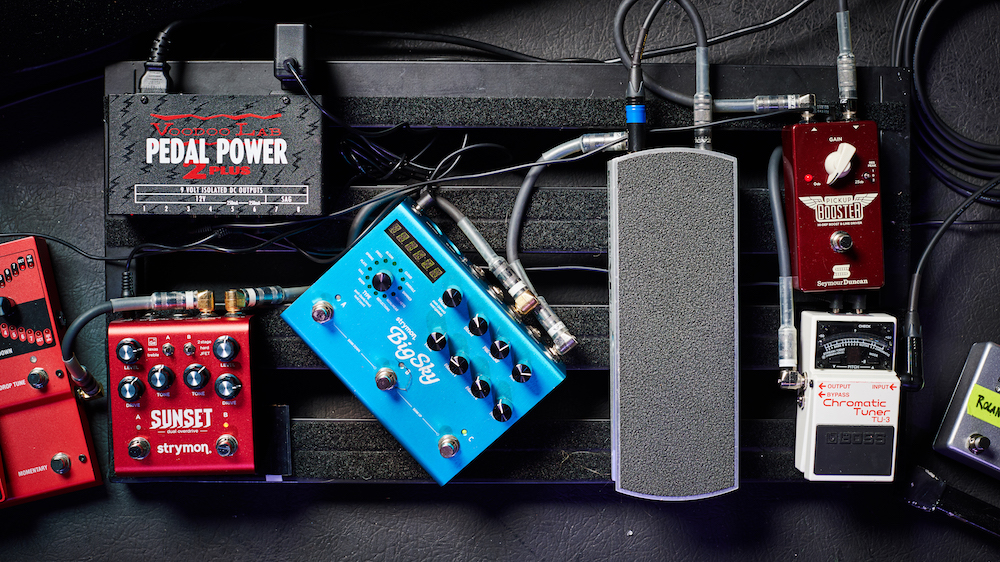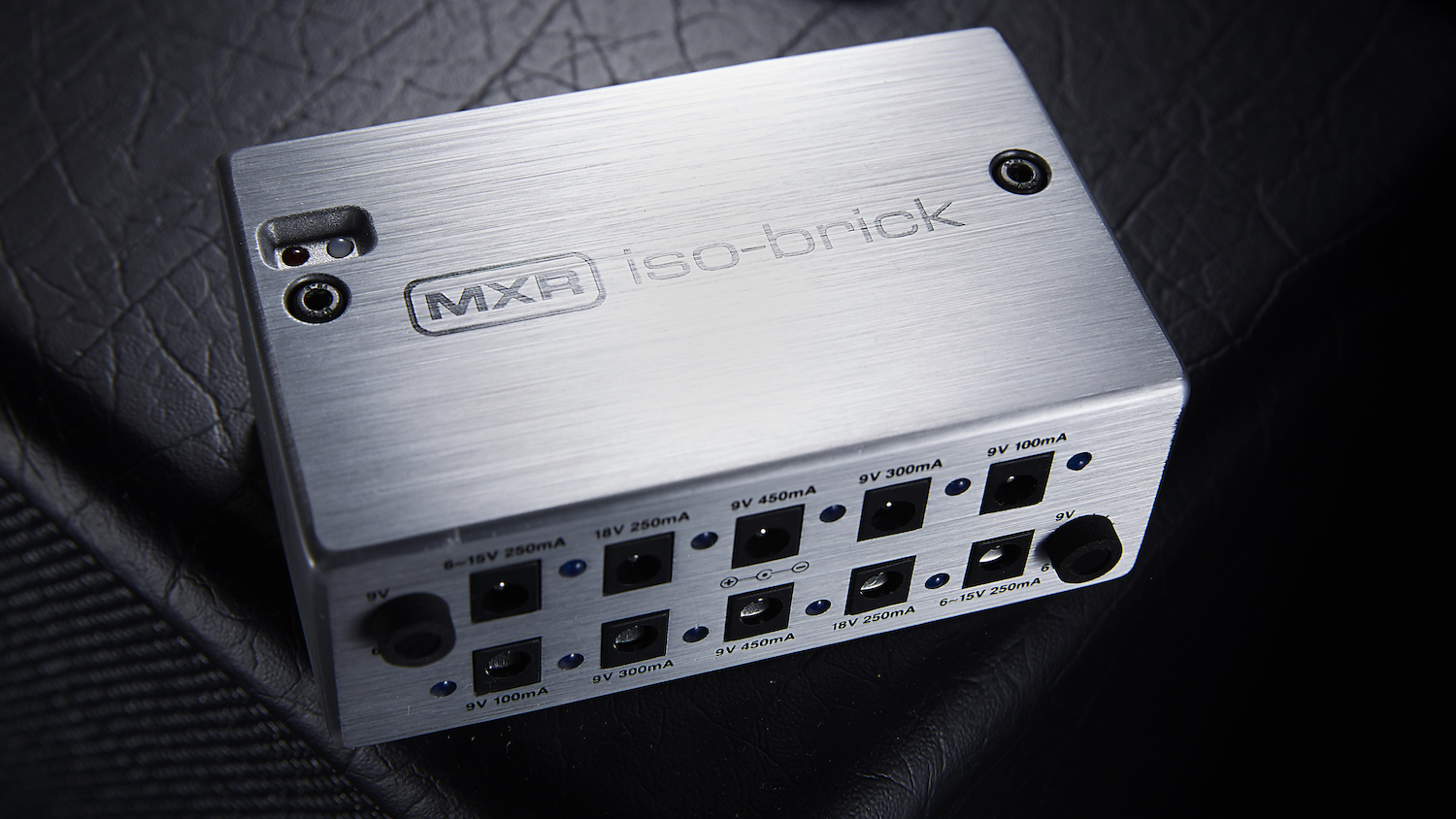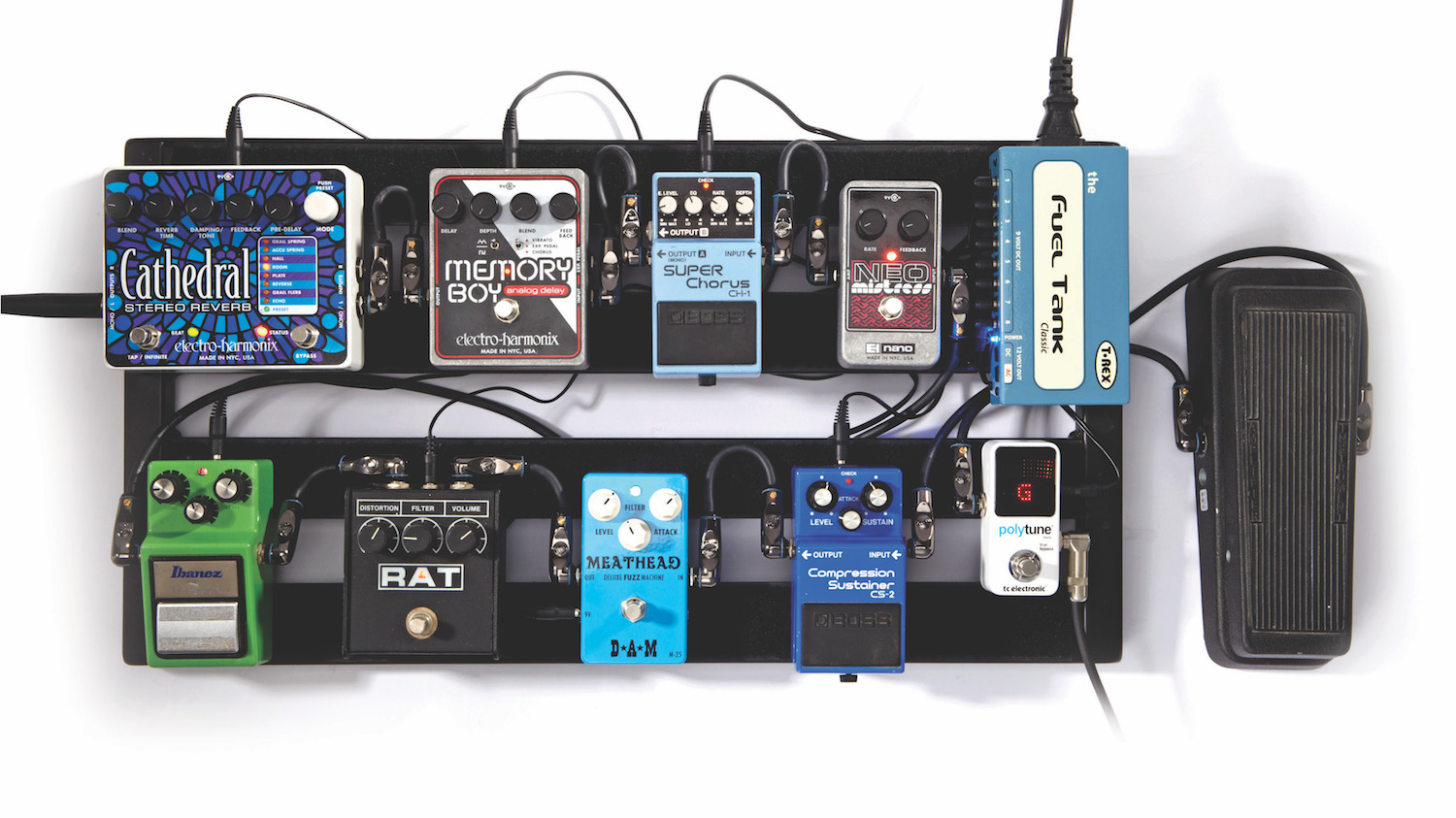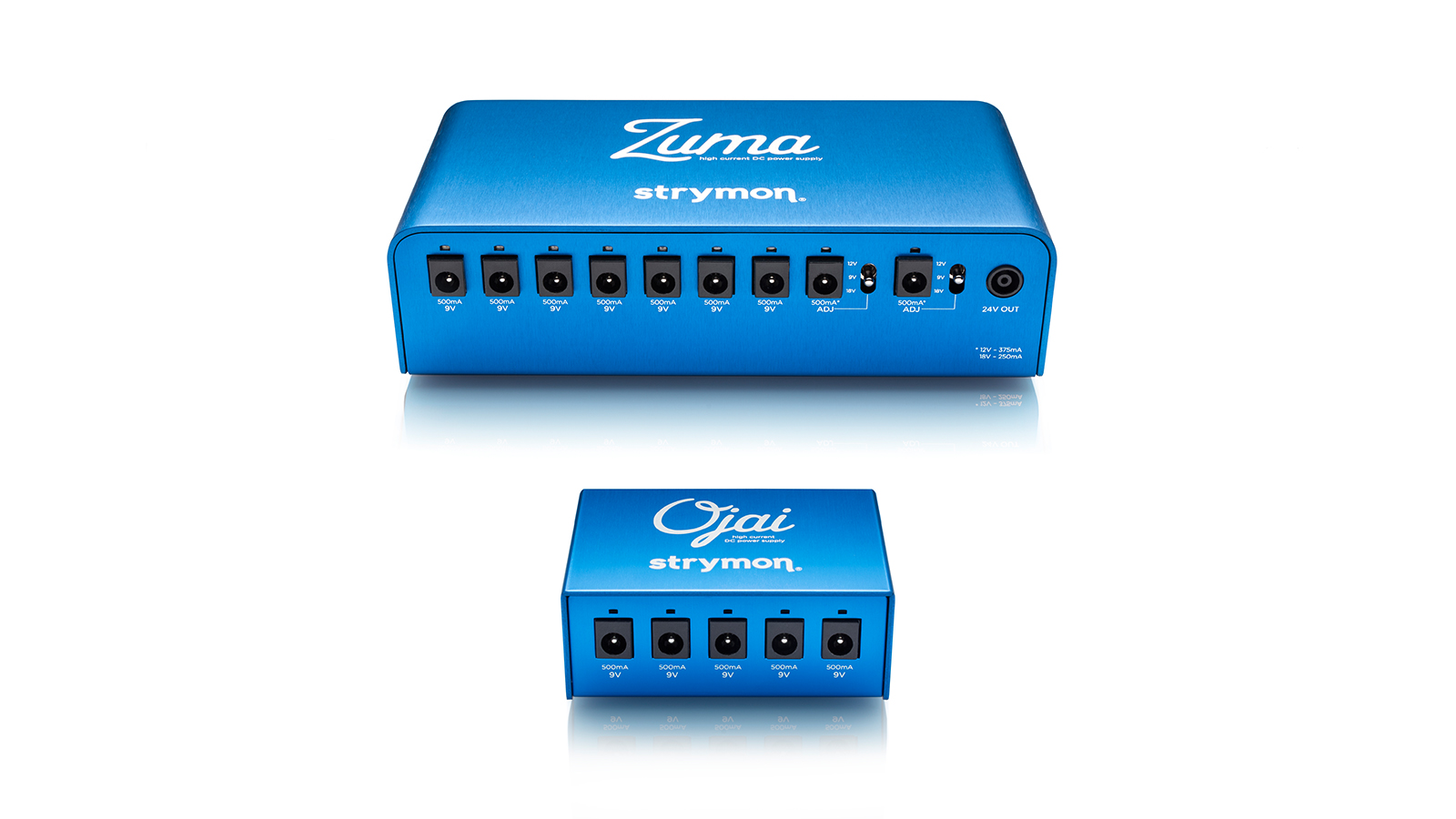9 reasons you need to upgrade your pedalboard power supply
Reduce noise, organise your pedalboard, increase pedal count and more with this guitar gear essential

A decent pedalboard power supply is absolutely essential for a properly functioning pedalboard, yet, we must admit that it's hardly a sexy purchase. Whether you're looking to upgrade from running your growing pedal collection on batteries or from a cheap daisy chain, we've compiled a list of reasons why you should choose a power supply as your next gear purchase.

• The best pedalboards for your effects
• Check out the best guitar cables and patch leads
• How to organise your pedalboard
1. Pedalboard organisation
Most decent power supplies come with power leads of varying lengths, allowing you to more tidily wire up your board, without lots of messy long leads hanging from the underside. Some brands, like One Spot, also provide colour-coded leads, which will allow you to more quickly identify and troubleshoot which pedal is which should you need to. Not only that, but most professional-grade power supplies will also come with mounting hardware that will mean they can be securely mounted to almost all production pedalboards.
2. Higher overdrive headroom
Some overdrives can operate at not only the industry standard of 9V DC, but also 12V, 15V or even 18 for increased headroom. Some pedals use an internal 'charge pump' to achieve this, but many more simply support you attaching a higher voltage power source. To aid with this, many pro level power supplies have outputs with higher voltage options like 12, 15 or 18V that can then be used with pedals like the Amptweaker line that support 18V operation. Remember to check the manual of the pedal before trying this though, or you might end up bricking your precious drive pedal.
3. Voltage sag effects
The flip-side of higher voltage options is that some pedals can react unpredictably and interestingly when they're run at lower than their required voltage. This is particularly true of fuzz pedals, and the legendary Z-Vex Fuzz Factory is based around the concept. Although it's a relatively niche application, several larger power supplies have an output with a variable voltage, usually starting at 9VDC and going as low as 4V or less for so-called 'dying battery' voltage starve use.

4. Lower noise
This is probably the most important thing on the list. Bottom line – if your power supply isn't isolated, then noise from one pedal will be able to enter the signal path of others, such as clock noise from a delay ending up coming out of your fuzz pedal. With a larger board, or noisier pedals, this can quickly result in unacceptable levels of noise. Any pro power supply worthy of the name will be fully isolated, with every output being separate from every other. In our experience, with anything over five or six pedals, this reduction in noise can be nothing short of a revelation when you do start using a properly isolated power supply.
5. No surprises on stage
Whether it's noise caused by a dodgy stage power supply or ground loops at your amp, when you leave the practice space to play shows, often your tone is at least partially beyond your control. With an isolated power supply, at least one thing is within your, ahem, power to keep consistent, and not only that, but you're also saving yourself from potential issues with the venue power damaging your gear in a freak accident. Moreover, better power supplies with a rock solid warranty are just more reliable, meaning you're less likely to have a catastrophic failure mid-solo.
6. International use
This is a relatively niche concern, granted, but if you plan on going to other parts of the world to play, then a pro power supply is worth investigating. Most units will offer switchable voltage between ~110V and ~240V, meaning you can use your board as is with no faffing wherever you find yourself. Some supplies, like the Strymon line automatically adapt to handle their input, without you even having to flick a switch. Given that some pedals like loopers can have clocks that are sensitive to their input voltage, it's even more important that your power supply is internationally consistent, and that it has isolated outputs that correctly deliver exactly the correct voltage to the pedal, whether that's 9V or something else.

7. Running more pedals
Most cheap daisy chains will run 5-6 pedals at a maximum, but professional power supplies will allow you to run more pedals in the same footprint, with some having as many as 12 outputs, like the One Spot CS-12. Other units, like the Strymon Ojai have neat features that allow you to daisy chain them, to save you space, and they even offer a low-profile version that can fit under the lower Nano-style pedalboards.
8. Correct current supply
Digital pedals require more current, and there's a chance that a simple daisy chain with spots for five or six pedals simply might not be able to provide enough current. There are digital-specific PSUs, like the Voodoo Labs Pedal Power Digital, that offer high current from every output, although many other modern PSUs now assume that players will be running more digital pedals and plan accordingly. The Strymon line default to 500mA per output, while One Spot isolated power supplies will supply up to their maximum available current across all their outputs, over and above what is marked – making them extremely useful for things like old Whammy pedals that require a huge 1.3A of current to operate.
9. Accommodating strange power demands
Finally, if you have awkward pedals that require a special power supply, like the old Digitech line that required a whopping 1300mA of current via a 9V AC output, you might find that a power supply like the One Spot CS-12 has your back. Not only is this more reliable than the cheap wall-wart supplied with the pedal, but it's also a significant space-saver, that neatly ties everything into one manageable power unit.
Want all the hottest music and gear news, reviews, deals, features and more, direct to your inbox? Sign up here.
Alex Lynham is a gear obsessive who's been collecting and building modern and vintage equipment since he got his first Saturday job. Besides reviewing countless pedals for Total Guitar, he's written guides on how to build your first pedal, how to build a tube amp from a kit, and briefly went viral when he released a glitch delay pedal, the Atom Smasher.
